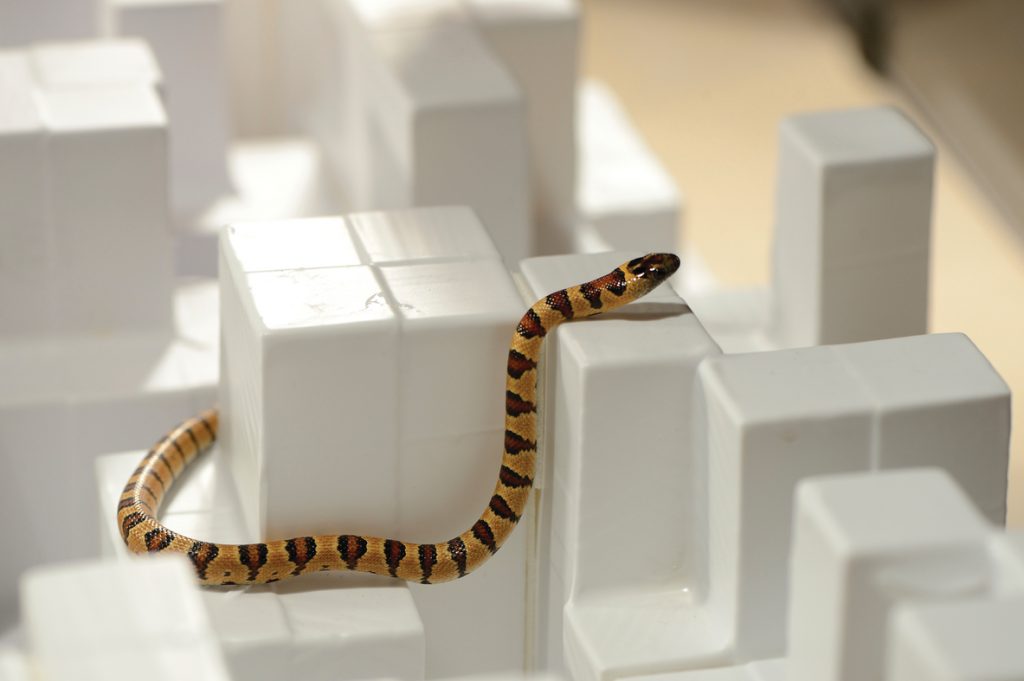
By studying how snakes slither up trees, rocks, and shrubbery, a team of Johns Hopkins engineers has created a snake robot that can nimbly and stably climb large steps. The team’s findings, published in Journal of Experimental Biology and Royal Society Open Science, could inform the creation of search-and-rescue robots able to successfully navigate treacherous terrain.
“We look to these creepy creatures for movement inspiration because they’re already so adept at stably scaling obstacles,” says Chen Li, an assistant professor of mechanical engineering who led the study.
Li and his team studied how the variable kingsnake climbed steps in their lab, challenging the reptile by altering step height and surface friction.
 They found that snakes partitioned their bodies into three sections: front and rear body wriggled back and forth on the steps like a wave, while the middle-body section remained stiff, hovering. The wriggling portions prevented the snake from tipping over.
They found that snakes partitioned their bodies into three sections: front and rear body wriggled back and forth on the steps like a wave, while the middle-body section remained stiff, hovering. The wriggling portions prevented the snake from tipping over.
After analyzing their videos, the researchers created a robot to mimic the animals’ movements.
At first, the robot snake had difficulty staying stable on large steps, so the researchers inserted a suspension system into each body segment, allowing it to compress against the surface when needed. This stabilized the robot, enabling it to climb steps as high as 38 percent of its body length with a nearly 100 percent success rate.
“The animal is still far superior, but these results are promising,” says Li.
Next, the team will test and improve the snake robot for even more complex 3D terrain with more unstructured large obstacles.




